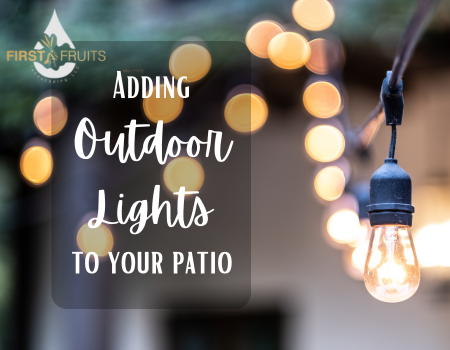Adding outdoor lights to a patio or pergola can transform your backyard into a magical retreat that provides a space to relax with a morning cup of coffee, or create a backdrop for dinner on the patio with ambient lighting. Despite their charm, a common concern among homeowners is whether these lights can withstand the elements, particularly rain. While summer is starting to make an appearance here and there, with a wet and rainy climate, it’s important to be proactive, and ensure that your landscaping and the elements around it are ready to weather any storm.
Understanding Outdoor Lighting Ratings
Outdoor lights are designed to endure various weather conditions, but not all lights are created equal. The key to determining whether your outdoor lights can handle rain lies in their Ingress Protection (IP) rating. The IP rating is a two-digit code that indicates the level of protection against solid objects and liquids.
For example, an IP65 rating means the light is dust-tight and protected against water jets from any angle, making it suitable for outdoor use. In general, for patio or pergola lights, look for a minimum rating of IP44, which protects against splashing water.
Types of Outdoor Lights and Their Durability
- String Lights:
- IP44 Rating: These are typically safe for use in light rain. They can handle occasional splashes but shouldn’t be submerged in water.
- IP65 Rating: These string lights can withstand more severe weather conditions, including heavy rain and direct exposure to water jets.
- Lanterns and Sconces:
- Wall-mounted lanterns and sconces often have higher IP ratings, usually starting at IP44 and going up to IP67. These lights are designed to handle direct exposure to rain and even snow.
- LED Strip Lights:
- For outdoor use, ensure the LED strip lights are encased in a waterproof silicone coating. An IP65 or higher rating is ideal for these lights, ensuring they can handle rain without short-circuiting.
Installation Tips for Rain-Proof Lighting
- Proper Placement:
- Even with a good IP rating, placement matters. Install lights under covered areas of your pergola or patio to minimize direct exposure to rain. Overhanging eaves, pergola roofs, or even strategic placement under furniture can offer extra protection.
- Seal Connections:
- Waterproof connectors and sealants can prevent water from seeping into electrical connections. Use heat-shrink tubing or electrical tape to seal any vulnerable points.
- Use GFCI Outlets:
- Ground Fault Circuit Interrupter (GFCI) outlets are a safety necessity for outdoor electrical setups. They can prevent electrical shock and protect your lights from damage caused by water exposure.
- Regular Maintenance:
- Inspect your outdoor lights regularly. Check for any signs of wear and tear, such as frayed wires or cracked casings, and address these issues promptly to prevent water damage.
Alternatives for Wet Climates
If you live in an area with frequent rain, consider alternative lighting options:
- Solar-Powered Lights: These lights are often designed with waterproofing in mind since they are intended for outdoor use. They are self-contained, reducing the risk of electrical issues.
- Battery-Operated Lights: Like solar lights, these are often better sealed against the elements and can be placed anywhere without worrying about electrical connections.
Outdoor lights can indeed get ruined by the rain if they are not properly rated or installed, however, by choosing lights with appropriate IP ratings, installing them correctly, and performing regular maintenance, you can enjoy beautiful, rain-proof illumination for your patio or pergola year-round. With the right precautions, your outdoor space will remain a cozy, well-lit haven, no matter the weather.

